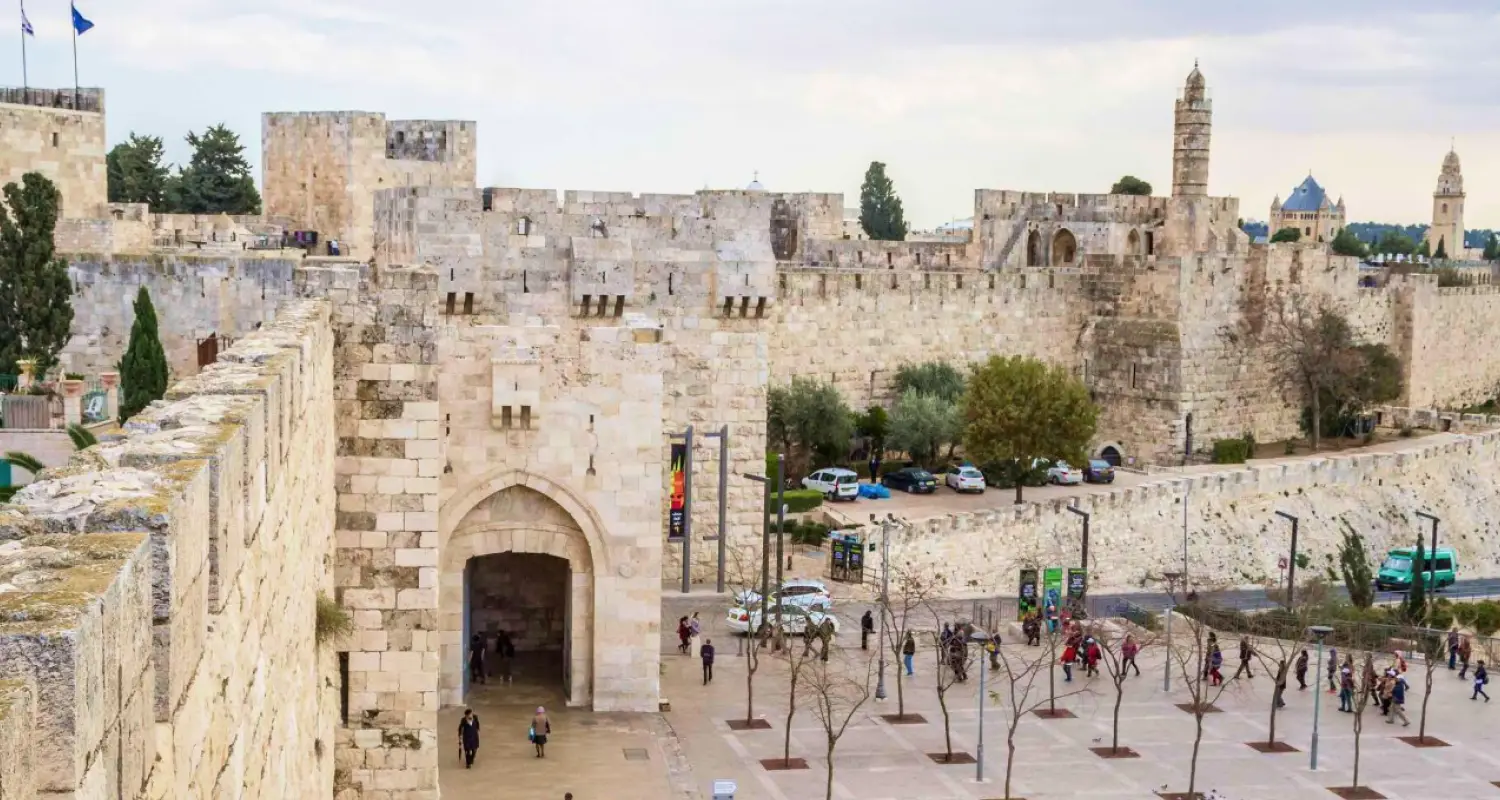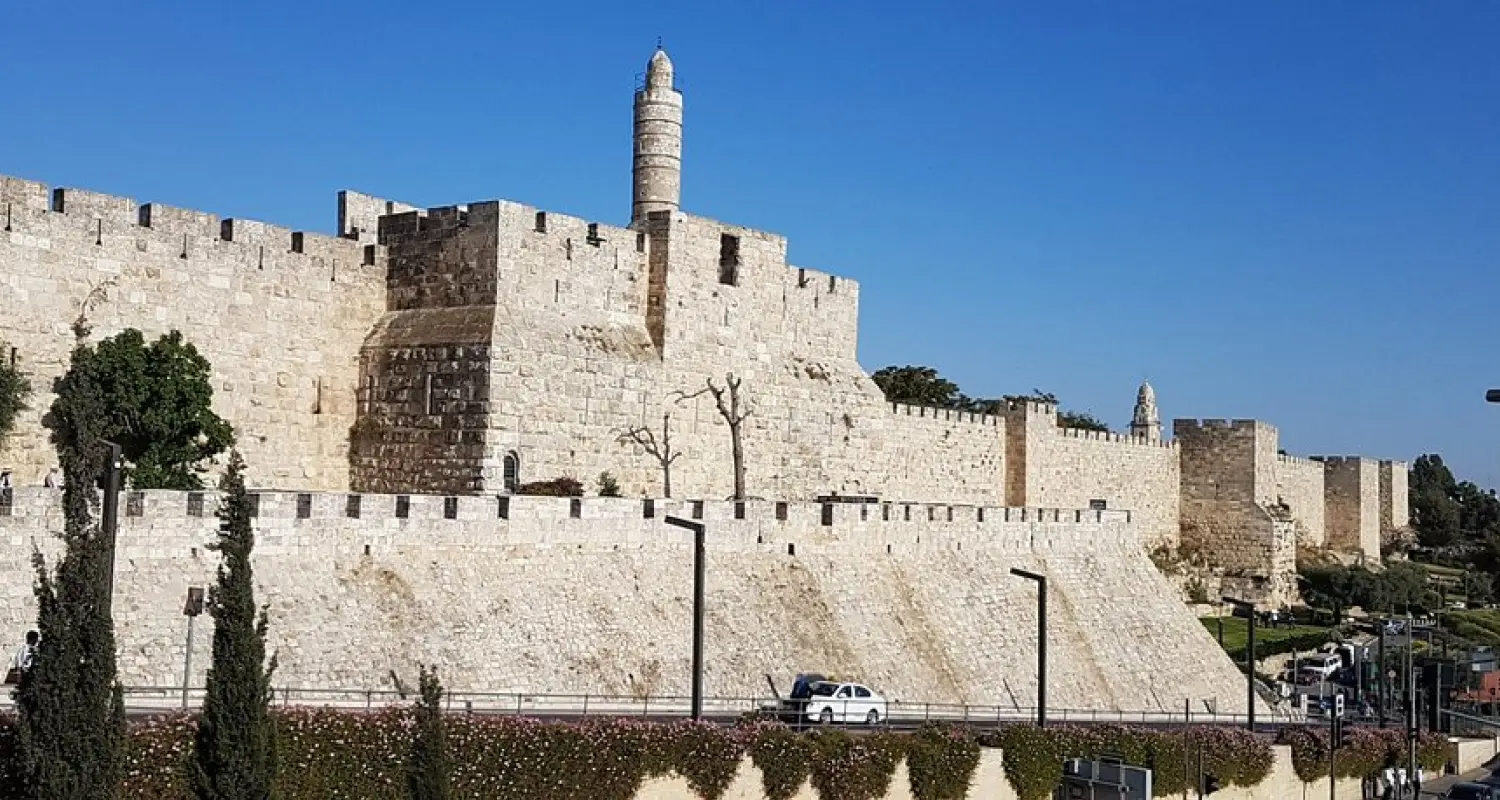The Wall and Gates of Jerusalem
The first thing that visitors and residents see when they enter the city of Jerusalem, and the last thing they see when they leave, is the Wall of the Old City. This majestic monument surrounds the City like a bracelet on a wrist; thus, it was selected as the first trail in the City, given the many options it offers. The trail can be long, lasting anywhere between three and five hours, and coming full circle along the entire length of the Wall, which is around 4,325 meters. The trail can also be of medium length, encompassing only half of the Wall’s parameter, such as the walk from Bab al-‘Amud (Damascus Gate) to Bab al-Nabi Daoud (Zion Gate), whether walking eastwards to Bab al-Sahira (Herod’s Gate) or westwards towards Bab al-Jadid (New Gate). This takes around two to three hours. One can always cut it short and settle for a visit along a quarter of the length of the Wall. There is also an opportunity to climb onto the Wall in the area of Bab al-Khalil (Jaffa Gate) for a fee, to view the Old City with its scenery and architecture. It is recommended to start the trail at Bab al-‘Amud, given its significance and importance as the main gateway into the Holy City and one of the most prominent gates of the Jerusalem Wall. Nevertheless, one can start the trail from any of the gates, going clockwise or anti-clockwise. The city’s topography is varied, offering level areas, high ones and others that are low. It is worth noting that the best rest areas are near Bab al-‘Amud and Bab al-Khalil, while the area between Bab al-Sahira and Bab al-Maghariba (Dung Gate) has no services.
The trail’s main stations are: Bab al-‘Amud, Bab al-Sahira, al-Rashidiyya School Tower, Burj al-Laqlaq (Stork Tower), Bab al-Asbat, Bab al-Maghariba, Bab al-Nabi Daoud, Bab al-Khalil, the Citadel, and Bab al-Jadid.



The Importance of the Jerusalem Wall
The Wall of Jerusalem carries major significance. It is one of the most prominent features of the City of Jerusalem and is characterized by the fact that it is complete, unlike the partially surviving walls that surround other historical cities. In addition, the evident parts of the Wall were notably built during a single architectural era. The Wall’s structure abounds with geometric and floral reliefs and motifs, as well as writings, representative of the architectural schools of the Mamluk and Ottoman periods. Apart from its historical value and significance, the Wall is essentially an embracing protector of the Holy City and its heritage.
Statistical Data about the Jerusalem Wall
The current Wall of Jerusalem was built at the beginning of the Ottoman era upon the orders of Sultan Suleiman I (Suleiman al-Qanuni or Suleiman the Magnificent) (1520-1566 AD / 926-974 H); the actual construction of the Wall was carried out between 1537-1541 AD (944-947 H) and continued for almost five years. The height of the Wall varies from one area to another, depending on the topography of the terrain, but ranges between five and 15 meters. The Wall is three meters thick in some areas, particularly at its base, but the prevalent thickness is around 1.5 meters. It hosts 34 watchtowers, the most known of which are Burj al-Laqlaq (1538-1539 AD / 945 H) and Burj Kibrit (1540-1541 AD / 947 H). The Wall also hosts around 379 arrow slits and 17 machicolations, as well as several other military defense features, such as towers, turrets, observation terraces, low entrances, and moats that surround some of the walls. The Wall displays a large set of complex, rich decorations that had required time and effort to design and implement. These decorative elements are embossed floral motifs comprising small flowers, fruits, leaves and tree branches. The flowers were engraved in layers, with a varied number of leaves ranging from one to 16. Additionally, composite geometrical formations can be seen on the Wall, displaying the finest shapes of stars, three-, six-, eight-, or ten-sided.
The Jerusalem Gates
The current Jerusalem Wall has seven open gates, five ancient, original ones and two which were added later. The five original gates are: Bab al-‘Amud (1537-1538 AD / 944 H), Bab al-Sahira (1537-1538 AD / 944 H), Bab al-Asbat (1538-1539 AD / 945 H), Bab al-Nabi Daoud (1540 AD / 947 H), and Bab al-Khalil (1538-1539 AD / 945 H).
